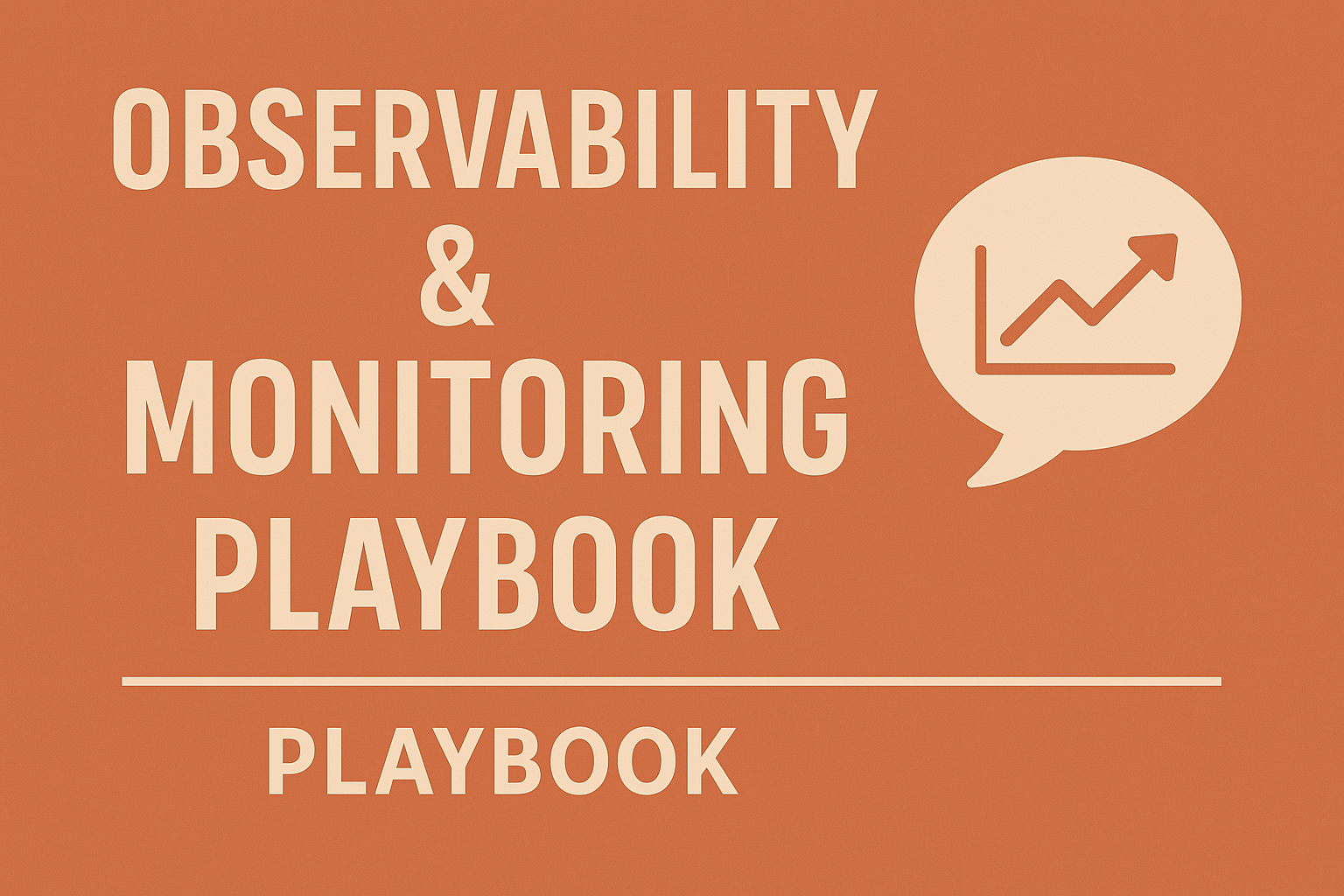Playbook : Observability & Monitoring Playbook

🌐 Purpose
To ensure our engineering systems are visible, diagnosable, and measurable in real time - enabling teams to detect, understand, and resolve issues quickly. This playbook outlines how to embed observability into our products from day one, not just bolt it on after incidents.
⚖️ Principles
- You build it, you own it - including how it’s monitored
- Observability is an engineering capability, not an ops afterthought
- Monitoring tells you what is broken; observability helps explain why
- Signal over noise: optimise for fast, actionable feedback
- Make problems easier to find and faster to fix
✅ What Good Looks Like
- All systems expose health metrics, logs, and traces by default
- Alerts fire on symptoms users care about - not just thresholds
- Dashboards are actionable and owned by teams
- Teams respond quickly, learn fast, and feed insight back into design
📊 Key Observability Components
1. Metrics
- Quantitative indicators (e.g. latency, error rates, throughput)
- Aggregated over time for trend analysis
- Examples: request count, CPU usage, SLO compliance
2. Logs
- Structured, queryable records of events
- Centralised with standard fields (e.g. request ID, timestamp)
- Use for forensic debugging and auditing
3. Traces
- End-to-end request visibility across systems and services
- Useful for identifying bottlenecks and latency hotspots
4. Dashboards
- Real-time system views tied to key user journeys or services
- Should tell a story at a glance (health, performance, risk)
5. Alerts
- Triggered by user-impacting symptoms, not internal implementation
- Tied to SLOs or error budgets
- Routed to the right team, with actionable context
⚡ Engineering Practices
Embed Observability Early
- Define what success looks like from a user/system perspective
- Instrument code with semantic logging, metrics, and tracing
Shift Left on Monitoring
- Include observability in Definition of Done
- Review telemetry coverage in code reviews
- Monitor from the perspective of the end-user experience
Automate Where Possible
- Standard observability sidecars or libraries
- Infra-as-code for alert definitions and dashboards
Run Failure & Alert Simulations
- Test that dashboards and alerts are meaningful
- Include observability gaps in incident reviews
Make Observability Actionable
- Avoid vanity dashboards or unactionable alerts
- Focus on system health, degradation patterns, and performance trends
📈 Key Metrics to Track
- Request Rate, Error Rate, Latency (RED metrics)
- Saturation metrics (e.g. queue length, CPU usage)
- SLO compliance and burn rate
- Alert volume and signal-to-noise ratio
- MTTR and detection time for incidents
🔧 Tools & Platforms
- Metrics/Monitoring: Prometheus, Datadog, New Relic, CloudWatch
- Logging: ELK/EFK stack, Loki, Splunk, Fluentd
- Tracing: OpenTelemetry, Jaeger, Honeycomb, Zipkin
- Dashboards: Grafana, Kibana, Datadog
- Alerting & Incident Routing: PagerDuty, Opsgenie, VictorOps
🔑 Governance Link
This playbook supports:
- Policy: Resilience Over Uptime, Data-Driven Decision-Making
- Standards: Embed Telemetry in Every System, Implement Real-Time Alerts, Measure Engineering Outcomes, Build Observability from Day One
📖 Further Reading
- Google SRE Book (Chapters on Monitoring & Alerting)
- "Observability Engineering" by Charity Majors et al.
- RED & USE monitoring frameworks
- OpenTelemetry project and documentation
- Honeycomb’s Observability Maturity Model